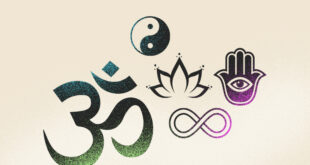Movies have been a powerful form of entertainment and artistic expression since the late 19th century. Over the years, the film industry has undergone a remarkable evolution, transforming from silent black-and-white classics to the visually stunning and technologically advanced blockbusters of today. This journey reflects not only the progress in filmmaking techniques but also the changing tastes and preferences of audiences worldwide.
The Silent Era:
The birth of cinema can be traced back to the late 1800s, with the Lumière brothers’ groundbreaking invention of the cinematograph. The silent era that followed saw the emergence of iconic films like “The Birth of a Nation” (1915) and “Metropolis” (1927). These early films relied on expressive acting, dramatic visuals, and live musical accompaniment to convey emotion and tell compelling stories without the need for spoken words.
The Golden Age of Hollywood:
The transition from silent to sound films marked a revolutionary period known as the “Golden Age of Hollywood” in the 1930s and 1940s. The introduction of synchronized sound opened new possibilities for storytelling, allowing filmmakers to explore dialogue, music, and sound effects. Classic films such as “Gone with the Wind” (1939) and “Casablanca” (1942) defined this era, establishing Hollywood as the global center of filmmaking.
The Rise of Technicolor and Cinemascope:
Advancements in color technology brought a new dimension to filmmaking during the mid-20th century. Technicolor, introduced in the 1930s, allowed filmmakers to create vibrant, visually stunning worlds. This era witnessed the release of iconic films like “The Wizard of Oz” (1939) and “Singin’ in the Rain” (1952). Additionally, the widescreen format Cinemascope, popularized in the 1950s, further enhanced the cinematic experience, immersing audiences in epic tales like “Ben-Hur” (1959) and “Lawrence of Arabia” (1962).
The New Hollywood and the Blockbuster Era:
The late 1960s and 1970s marked a departure from traditional studio-driven filmmaking with the rise of the New Hollywood movement. Filmmakers like Francis Ford Coppola and Martin Scorsese brought a grittier, more realistic style to the screen with films such as “The Godfather” (1972) and “Taxi Driver” (1976). Simultaneously, the 1970s saw the birth of the blockbuster era with films like “Jaws” (1975) and “Star Wars” (1977), forever changing the landscape of the film industry.
The Digital Revolution:
The late 20th century witnessed a technological revolution in filmmaking with the advent of computer-generated imagery (CGI) and digital filmmaking. Directors like James Cameron pushed the boundaries of what was possible with films like “Terminator 2: Judgment Day” (1991) and “Avatar” (2009). CGI allowed filmmakers to create fantastical worlds and creatures, revolutionizing the visual language of cinema.
Contemporary Cinema:
Today, cinema continues to evolve with advancements in virtual reality, augmented reality, and artificial intelligence impacting storytelling and filmmaking. Streaming services have disrupted traditional distribution models, providing filmmakers with new platforms to showcase their work. The industry has become more diverse, with voices from around the world contributing to a rich tapestry of storytelling.
Conclusion:
The journey of cinema from its humble beginnings to the blockbuster spectacles of today is a testament to the resilience and adaptability of the film industry. As technology continues to advance, and societal tastes evolve, one thing remains constant – the magic of cinema, the ability of films to transport audiences to different worlds, evoke emotions, and leave a lasting impact on the collective human experience. The evolution of cinema is an ongoing narrative, with each era contributing to the rich tapestry of this art form that has captured the hearts and minds of people for over a century.
- Get free Tips & Trick everyday
 Samoyik Your Entertainment Partner
Samoyik Your Entertainment Partner



